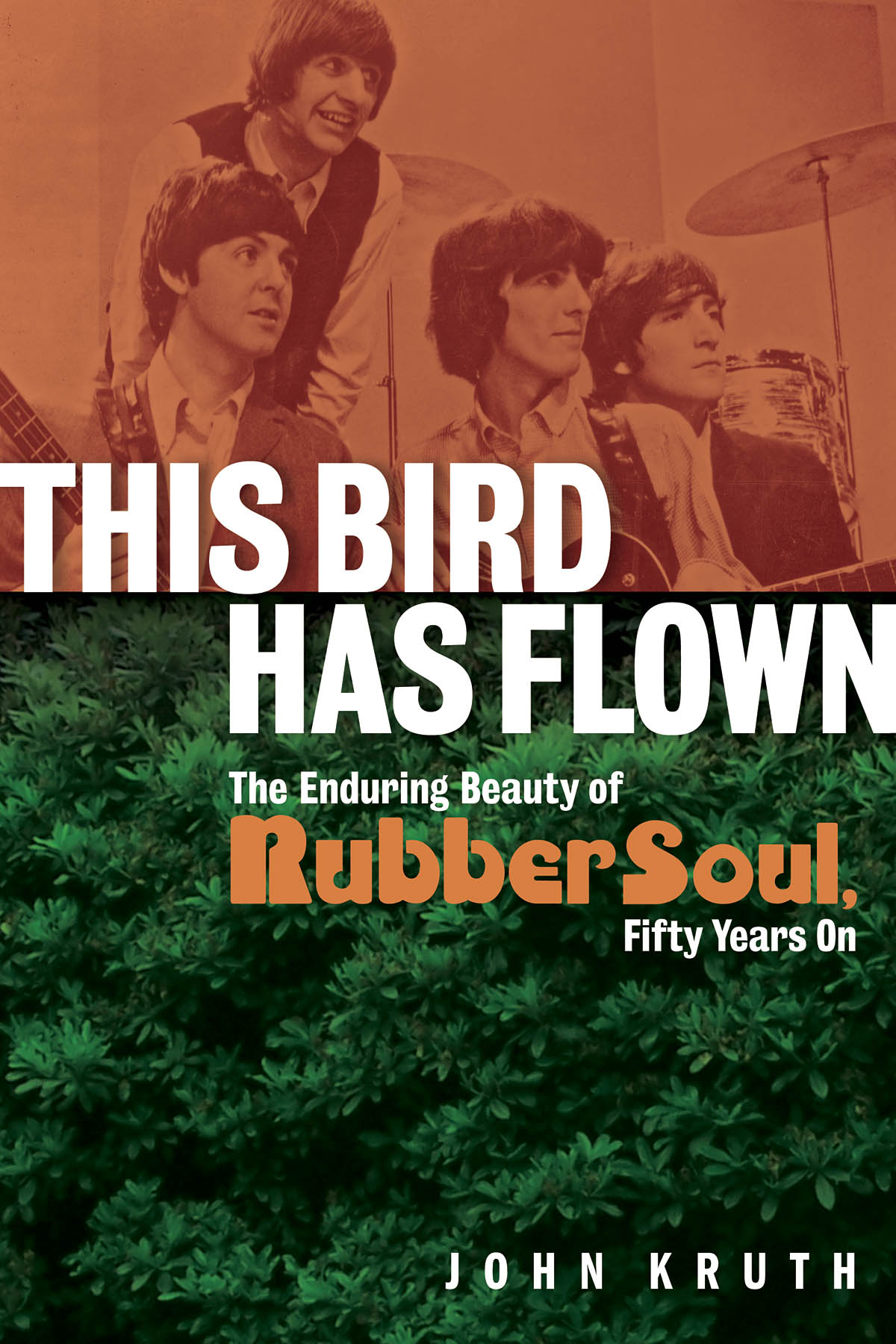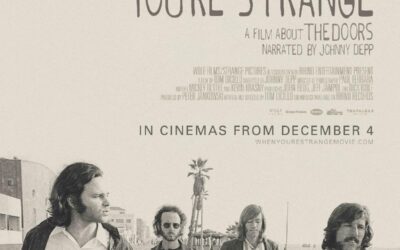By Harvey Kubernik c 2015
RUBBER SOUL – the album that changed the musical world we lived in then to the one we still live in today. —Andrew Loog Oldham 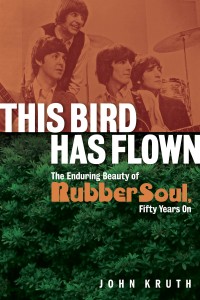
Rubber Soul was the Beatles’ first release not to feature their name on the album’s cover, an uncommon strategy in late 1965. The cover photo was by Robert Freeman, snapped in John Lennon’s garden in Weybridge.
I bought a British import copy of Rubber Soul in California on Hollywood Blvd. around the corner from the Capitol Records tower building at the fabled Lewin Record Paradise. I then purchased a stereo one at Thrifty’s Drugs on Wilshire Blvd. in Los Angeles. I took it to a party in downtown L.A. and watched my brand new LP get tossed into traffic on La Brea Ave., by a couple of soul brother party-goers irate about “Beatles stealin’ and took from us again.” This is a few months after the summer 1965 Watts riots.
I stated my case to some angry Bubble Up drinkers that in a newspaper, at a U.S. press conference, Paul McCartney, a devoted music fan, lauded the “colored music” and the sounds of the Motown label.
Our record hop got racial and facial. Someone hurled a pack of Kool Menthol cigarettes at me. So I hitch-hiked home, from the corner of Vermont and Jefferson at 11:30 at night. But, not after a quick spin the bottle sympathy session with a couple of girls who were in my junior high school homeroom. Then they didn’t speak to me the rest of the semester.
Paul McCartney suggested the title Rubber Soul. A parody on the relationship white musicians constantly developed with influential black music. “Rubber Soul” was a term a black musician described the 1964 and ’65 sound of the Rolling Stones’ lead singer, Mick Jagger.
During a Beatles’ recording session for a take on 1964’s “I’m Down,” later housed on Anthology 2,” McCartney utters the phrase, “plastic soul, man, plastic soul.”
In a 1997 interview with me, George Harrison explained that he had first heard the sitar instrument on the set of The Beatles’ movie Help! Later that year, he would record with it on the session for John Lennon’s “Norwegian Wood (This Bird Has Flown).”
George told me about his earliest attempt at playing the sitar with the Beatles, “Very rudimentary. I didn’t know how to tune it properly, and it was a very cheap sitar to begin with. So ‘Norwegian Wood’ was very much an early experiment. By the time we recorded ‘Love You Too’ I had made some strides.
“That was the environment in the band. Everybody was very open to bringing in new ideas. We were listening to all sorts of things, Stockhausen, avante-garde music, whatever, and most of it made its way onto our records.”
“Today we think of the Beatles epic as one incredible breathless run, and it did all happen very fast, their 8 or 9 dizzying years,” offers writer and author. Daniel Weizmann. “But on close inspection, before Rubber Soul, there was a subtle sense that the Beatles were…almost starting to run of steam, exhausted from all that mop-shaking. And who can blame them? Beatlemania would have driven four less durable souls into an insane asylum. Beatles for Sale, Beatles VI, Help! — the songs are great but some near-invisible identity crisis is at work in them, a groping for more. In an alternate, less beautiful universe, the band might have even thrown in the towel right then and there. Which is partially why Rubber Soul is such a miracle — it’s not just an album, it’s an announcement that they would not back down. They had stripped down to essentials, learned to stifle their own cuteness, and were ready to push past youth, guided by introspection. They aren’t there yet, but the plot had thickened — and Rubber Soul is the first chapter of Act II, the very best part of the story.”
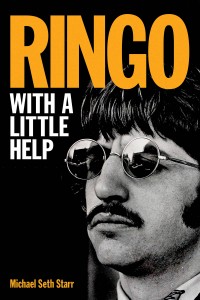 “Firstly, what a fabulous elasticisable title! Puts it all in the perfect perspective,” volunteers Australian-based music historian and author, Ritchie Yorke. “Creativity grows. And it shows. On Rubber Soul, we are seeing the beast that became John Lennon’s composing heart is gaining traction and he’s beginning to let it flow on through. How blessed we were that it flowed upon our watch. And in our presence. A wonderful album made most of us realize that there was a lot more to these dudes than just pulling off limp versions of great R & B tunes.’’
“Firstly, what a fabulous elasticisable title! Puts it all in the perfect perspective,” volunteers Australian-based music historian and author, Ritchie Yorke. “Creativity grows. And it shows. On Rubber Soul, we are seeing the beast that became John Lennon’s composing heart is gaining traction and he’s beginning to let it flow on through. How blessed we were that it flowed upon our watch. And in our presence. A wonderful album made most of us realize that there was a lot more to these dudes than just pulling off limp versions of great R & B tunes.’’
Author John Kruth has just published This Bird Has Flown The Enduring Beauty of Rubber Soul, Fifty Years On. His book reminds us how quick the LP was done.
“Written and recorded at breakneck speed, between October 12 and November 11th, (1965) Rubber Soul was clearly a game-changer, not just for the Beatles themselves, but as a work whose sound and ideas has lasted for decades, impacting nearly everything that transpired in popular music in its wake.”
Richard Bosworth is a longtime music producer/engineer who worked at Abbey Road.
“One of the other reasons the Beatles’ recordings sound so good still to this day,” Bosworth maintains, “is that the tape machine format was one-inch 4-track—a much wider tape width per track than any other analog tape format that has ever been conceived. The equivalent of 24-track would require that the tape format be six inches wide to get the same fidelity that the one-inch 4-track provided.
“Norman Smith engineered virtually every studio performance of the band from 1962 through 1965. On Rubber Soul, Smith captured innovative new sounds such as fuzz bass guitar, sitar and distinctly dry vocals.
“There’s a definite delineation point in the record production and musical instrument sounds for The Beatles with the release of Rubber Soul. There were hints of what was to come on ‘Help!’ (‘You’ve Got To Hide You’re Love Away’). Many influential American musicians of the day believe the U.S. version of Rubber Soul is one of the greatest albums ever (including Brian Wilson). In fact the opening songs on both sides of the American Rubber Soul, ‘I’ve Just Seen A Face’ and ‘It’s Only Love’ respectively, are two tracks from the English Help! LP and set an introspective acoustic tone for the American release.”
Big sonic changes are introduced on Rubber Soul with the actual electric guitars and the guitar amplifiers the band adopted at this point. Up until now they had stuck with the musical instruments they’re famously known for. Gretsch and Rickenbacker guitars for Lennon and Harrison and Hofner 500/1 bass guitar for McCartney, via various Vox guitar amplifiers. Rickenbacker had made a left handed 4001S electric bass guitar for McCartney that he received on the Beatles 1964 U.S. Tour and except for one song, “Drive My Car”, he used his new Rick bass exclusively on Rubber Soul. As the Rick is solid body as opposed to the hollow body Hofner, It gave a more solid electric bass sound than the more acoustic qualities of the Hofner.
“Whereas McCartney gravitated to Rickenbacker, Lennon and Harrison moved on to Fender, Gibson and Epiphone electric guitars,” reminds Bosworth. “The Beatles were aware of the brand of American guitars and amplifiers used by their idols Buddy Holly and Chuck Berry. However these were not available in England until 1965. Harrison and Lennon acquired twin sonic blue Fender Stratocasters which they used to great effect on “Nowhere Man” (U.S. single/British album release.) Harrison added a Gibson SG Standard and a Gibson ES-345-TD to his arsenal. Lennon, Harrison and McCartney all purchased Epiphone ES-230-TD Casino guitars and these became their ‘go to’ instruments for the next several albums and the 1966 tours.
“The Epiphone Casino became Lennon’s main guitar for the duration of the Beatles career and he used it exclusively on his first solo album and the ‘Cold Turkey’ Plastic Ono Band single,” underlines Bosworth.
“During the Beatles’ 1965 U.S. tour, Harrison was given a second Rickenbacker 360-12 by a Minneapolis radio station and he utilized it on ‘If I Needed Someone’ (British album release) in a tribute to the sound of The Byrds.
“Aware that many American musicians used Fender Musical Instrument’s guitar and bass amplifiers they began to buy a steady supply that continued right through the Abbey Road album. McCartney got a blonde Fender Bassman amp and soon after Harrison and Lennon bought two Fender Showman rigs with 15″ JBL D130 speakers. They still used Vox amps as well. They had an endorsement deal with Vox since 1963 and once that was in place the Beatles never appeared live without Vox amps. The company always supplied the band with their latest models and during this period both Lennon and Harrison received the ultra rare Vox 7120 electric guitar amplifier and McCartney was given the equally rare Vox 4120 bass amp.”
During the Rubber Soul sessions, the group cut the double A side single “We Can Work It Out/Day Tripper.” During these dates is when the band began questioning the production authority and sonic techniques of George Martin and the recording engineering staff of EMI Studios. They had garnered commercial success and wanted to expand the music beyond their initial Beatlemania sound, both vocally and instrumentally.
“I think vocally the Beatles are influenced by Bob Dylan during this period,” delineates Bosworth. “They had noticed there weren’t effects like reverb and vocal delay on Dylan’s vocals and it gave his performance an intimacy that really suited the lyrics.
“The Beatles own lyrics were taking on a new depth and they felt this kind of vocal sound would accommodate the new songs. They would say to George Martin and recording engineer Norman Smith ‘Why do our vocals have to have echo on every song? Why do we always have to do things the same way every time?’ With the release of Rubber Soul, the Beatles signaled they were not going to be artistically trapped by their success.”
“Rubber Soul seemed the first Beatles’ album released in the U.S. more or less to correspond to its U.K. counterpart, 1965 being rather late in the game to issue the themed Beatle musical think pieces recorded at the same session rather than grab-bags of singles from one and meat and potatoes from another two or three,” suggests photographer Heather Harris, the former Entertainment Editor of the UCLA Daily Bruin.
“Therefore American fans could rejoice simultaneously with their British our new musical heroes waxed experimental while still remaining front runners in the pop game. Brian Wilson wasn’t the only one who noticed. Harpsichord, Franglais, actual threatened violence, Dylantries et al. stewed and brewed through … the world’s best-selling pop band?! We teens reveled in the high caliber of largesse from these songwriters, only to find it successively topped in the 2 years to come with Revolver and Sgt. Pepper. Acute bliss.
“Lastly, psychedelic font lettering on an anamorphic stretch photo by Robert Freeman, exponent of natural and directional lighting, and director of Performance-type precursor insofar as it deftly balanced fey pop culture and butch violence, The Touchables. That cover: pure inspiration, in and of itself and to anyone interesting in the field of graphic art, photography and trailblazing visuals…”
Sidebar
“With their own, unique version of Rubber Soul American Capitol finally got it right,” claims proud Canadian Beatlemaniac Gary Pig Gold. “Up until 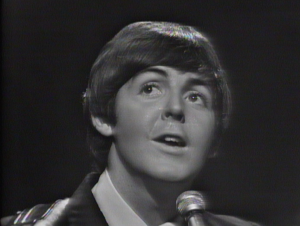 then of course, all of Parlophone’s precious Fab LP’s had been thoroughly sliced, diced and, I quote, Prepared for release in the U.S.A. with the assistance of Dave Dexter, Jr. With varying degrees of success, shall we say. But no sooner had John Lennon caught sight – not to mention sound – of Capitol’s slap-dash ‘very special movie soundtrack souvenir album’ for Help! than the (in)famous Dex was given the heave-ho by the powers-that-were at EMI’s London HQ, leaving substitute Capitol international A&R exec Bill Miller’s staff to assemble a Rubber Soul for 1965’s all-important North American Christmas market.
then of course, all of Parlophone’s precious Fab LP’s had been thoroughly sliced, diced and, I quote, Prepared for release in the U.S.A. with the assistance of Dave Dexter, Jr. With varying degrees of success, shall we say. But no sooner had John Lennon caught sight – not to mention sound – of Capitol’s slap-dash ‘very special movie soundtrack souvenir album’ for Help! than the (in)famous Dex was given the heave-ho by the powers-that-were at EMI’s London HQ, leaving substitute Capitol international A&R exec Bill Miller’s staff to assemble a Rubber Soul for 1965’s all-important North American Christmas market.
“And what a fine job they did! For the first time leaving the Beatles’ U.K. cover photos and graphics of choice intact – one of the Sixties’ most iconic long-playing images, absolutely – Miller’s men cobbled together what some still profess to be a ‘folk-rock’ blend containing two left-over numbers from the British Help! LP while removing several of the rougher, as in fully plugged-in tracks from Rubber Soul U.K. In doing so however, the core of the band’s intricate original running order was wisely left as-is and the ultra-refreshing result was a slightly more ‘mellow’ perhaps (‘mature’ was the word many startled reviewers used in ‘65) package from those hitherto poppy-go-lucky mop-tops.
“Nevertheless, discriminating ears from Los Angeles to the Canadian Laurentians immediately took notice …not the least of which to the very air of savvy sophistication – though some detected second-hand jazz-cigarette smoke as well – which permeated the entire proceedings, from Lennon’s provocatively fishy-eyed ‘I dare you to find anything wrong with this’ gaze on the front cover to the Strat ‘n’ sitar-soaked sounds within. Why, for starters as we all know, no less than a certain Beach Boy, upon first removing Rubber Soul from his turntable, immediately vowed to ‘answer’ it asap by himself making ‘the greatest album ever!’ And if, because of that challenge alone, the American Rubber Soul should be hailed, even a half-century later, as a resounding, unqualified utterly game-changing success.”
End of Sidebar
“I want to give extra props to the U.S. Rubber Soul,” hails musician Jim Wilson of Motor Sister, who previously worked with Sparks and Daniel Lanois. “Of course I love the 14 track U.K. version, but as a young record collector who grew up with a mid-70’s Apple pressing, I’ve always have a soft spot for the American track listing. Plus, it has all the songs you played with your buddies when the acoustic guitars came out.
“Now, the U.S. Revolver suffers in comparison because you’re just getting less tracks, but I really dig the Rubber Soul mix with the folky Help! songs. Besides, we got all the extras on Yesterday & Today with a great cover photo to stare at (two actually!). And no matter what John Lennon says, I absolutely worship ‘It’s Only Love.’ Oh yeah, don’t forget we got the cool false start on ‘I’m Looking Through You.’ You have to have them both!”
“Rubber Soul is the Beatles album that illuminates the simple fact that when you strip away some of the early Beatles raw electric energy and manic song power — you simply find that more endless talent awaits you, to positively blow your mind in this new semi-acoustic setting,” reinforces music and radio business veteran, Elliot Kendall.
“Focusing on the American version for now, Rubber Soul current personal favorites include the defiant Harrison track ‘Think For Yourself’ with its attitude-packed 6-string fuzz bass (furiously played by McCartney) and subversive funky rhythm section. Is it the Ghost of Motown’s Funk Brothers (specifically bassist James Jamerson and rhythm section spirits) who pay a brief mystical visit to this musical space? Take a closer listen next time you spin.
“‘The Word’ is positively pulpit-pounding evangelist action. This track bears repeated listening for a multitude of reasons, a few listed here: Lennon’s vocal is nothing less than a man let loose with the truth, with the driven need to share his newfound revelations with the world. So…how about a stack of those bad books for our research, Winston O’ Boogie?
“Lyrical intimacy rules the aura of this album. On ‘Girl’ Lennon is positively confessional. The Greek-inspired acoustic guitar work (evoking an old world bouzouki) only serves to underscore the emotion and reflective surrender of this piece.
“Romantic disillusionment haunts both McCartney-led tracks ‘You Won’t See Me’ and ‘I’m Looking Through You,’ both tracks said to be inspired by the state of his then-relationship with Jane Asher. Both are loaded with daring innovation and a new sophistication previously unheard in pop recordings, as with the entire album.
“Rubber Soul had no single released in the U.S., which is bewildering in hindsight,” admits Kendall. ‘’Drive My Car’ and ‘Nowhere Man’ (both included on the UK versions) were released as singles on both sides of the pond, but not included on the American LP pressings.”
“‘Day Tripper’ and ‘We Can Work It Out’ were already available as a two sided singles. Help! had been out for the Summer of Yesterday. Now Rubber Soul to end the year on a quiet note. of course the import and domestic versions of Rubber Soul were different but that was cool. You either bought domestic version at Sears or bounced over to Lewin Record Paradise to get the import,” discloses writer Paul Body.
“It seemed like a perfect Winter album, all dark and moody. They had come a long from ‘I Want To Hold Hand.’ It was cool to hear ‘Nowhere Man’ on the album before it was a single, never will forget that when I saw them LIVE. George Beatle played that cool lead break and I remember you could hear that bell sound at the end, even in Chavez Ravine. The harmonies were stunning on ‘If I Needed Someone.’ The Hollies covered it but the Beatles version was the ONE. ‘Michelle’ was great to listen to on a cold winter night, felt like Paris.
“Yeah the Mop Tops had come a long way. The Country stomp of ‘I’m Looking Through You’ made you want to dance, the European grimness of Girl, sounded like something from a Truffaut movie, all black turtle neck and black beret chic. Francoise Hardy. ‘In My Life’ was sad then and it’s sadder now. Yeah, Rubber Soul was pointing towards the future and what a future it turned out to be.”
“Rubber Soul sows the seeds of psychedelia, a wonderfully loose and reflective record with an almost entirely John Lennon second side which gives it a particular character: five of those six songs are John’s – ‘It’s Only Love,’ ‘Girl,’ ‘In My Life,’ ‘Wait’ and ‘Run For Your Life,” ventures Mark Ellen, author and former editor of Word magazine.
Michael Seth Starr is the the author of the just published comprehensive in-depth biographical study Ringo Starr With a Little Help.
“In my opinion, Rubber Soul is not one of the better showcases for Ringo’s drumming style, since the album is more folksy in tone and, for the most part, requires Ringo to keep it simple.
“That being said, his singular, slightly-behind-the-beat style is showcased right off the bat in ‘Drive My Car,’ the album’s opening track. I love the way in which his opening drum roll underscores the first few notes of Paul McCartney’s bass riff — and how Ringo’s propulsive thwacking ‘drives’ the song and underscores its double-entendre lyrics.
“Ringo also proves why he and McCartney were such a cohesive rhythm section on ‘The Word,’ which features McCartney’s bouncy bass line and Ringo’s straight-ahead drumming — complemented by his ‘only Ringo could do that’ fills (partly the result of his being a lefty, but playing a right-handed drum set).
“While ‘What Goes On’ is Ringo’s first co-writing credit as a Beatle — he’s given lyrical props alongside John Lennon and Paul McCartney — his drumming on this track is standard-issue and unremarkable. However, I like his sensitive touch on ‘In My Life’ Lennon’s bittersweet autobiographical paen. Ringo’s hi-hat/snare drum combination nicely underscores Lennon’s vocals — and the song’s overall tone.
(Incidentally, a variation on Ringo’s ‘In My Life’ drum beat can be heard on ‘Get Together,’ the hit single by The Youngbloods, which came out in July 1967, around a year-and-a-half after Rubber Soul.)
Sidebar
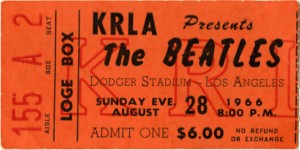 Roger Steffens: Remember when record stores had separate sections for Mono and Stereo? It was in one of them I bought my first Beatles record. I was living in Milwaukee, working as an actor at the Milwaukee Repertory Theatre and reading beatnik poetry, Ferlinghetti, Corso and others, in schools,” recalls music scholar, photographer, deejay and acclaimed author. Roger Steffens.
Roger Steffens: Remember when record stores had separate sections for Mono and Stereo? It was in one of them I bought my first Beatles record. I was living in Milwaukee, working as an actor at the Milwaukee Repertory Theatre and reading beatnik poetry, Ferlinghetti, Corso and others, in schools,” recalls music scholar, photographer, deejay and acclaimed author. Roger Steffens.
My friends were nearly all artists of various edge-busting kinds, with music as a common chord. We had begun dropping LSD and looked for albums that understood that experience and turned it into art. But that album would be Revolver. Rubber Soul was the pot album. At least according to John.
By 1965 we knew that the Beatles were always trying to top what they had done before. My copy is mono, just the way they wanted it to be heard. On the bottom of the back cover, it reads: ‘This monophonic microgroove recording is playable on monophonic and stereo phonographs. It cannot become obsolete. It will continue to be a source of outstanding sound reproduction, providing the finest monophonic performance from any phonograph.’ (italics mine) Essentially an acoustic album, half a century later, it fulfills that promise.
It was the album that took the Beatles’ audience out of the One Direction screaming teenage groups category and began insinuating their seductively sumptuous sound into hipsters’ pricked ears.
It was the first album in which the boys took over everything, including the cover. Oddly enough ‘rubber’ soul meant ersatz soul, plastic soul. But there’s nothing insincere in these tracks. It’s George’s favorite album, heavily influenced by herb.
‘Norwegian Wood’ is John’s first confessional, predating his first solo album by half a decade and introducing a nascent eastern influence as George plays a sitar on record for the first time.
‘Think for Yourself’ utilizes the LSD prophet Timothy Leary’s famous dictum, coming into notoriety at that time: ‘Think for yourself/question authority,’ although it’s ostensibly a love song. The Beatles were taught early to use personal pronouns in their titles – ‘I, Me, Mine,’
You, Your – to create the most appealing way to control the emotional effects of songs about the various aspects of love. As Bob Marley once noted, ‘what’s so bad about telling people to love one another?’
Another eastern instrument is introduced in ‘The Word,’ on which the only person who can legitimately claim to be The Fifth Beatle, producer George Martin, plays the harmonium. Here love is depersonalized to a philosophical principle. ‘It’s so fine, it’s sunshine, it’s the word love.’ And Paul declares, ‘I’m here to show everybody the light,’ his first admission that their music is meant to be transformative and enlightening. Teacher Paul.
‘It’s Only Love’ is another sneaky attempt by John to include some drug references: ‘I get high when I see you walk by,’ but not as overt as the smoke-sucking licks on ‘Girl,’ a ravishing ballad about sexual frustration. And then there’s the Beatles singing tit-tit-tit-tit in the background, wanting so much to shock like kids in middle school, smirking through the take.
‘I’m looking Through You’ is like an acidic revelation, seeing the image behind the illusion. And then there’s the transcendent ‘In My Life,’ which John considers his first real major piece of work. With George Martin on an Elizabethan piano solo recorded at half speed, ‘In my life, I love you more,’ has become a wedding perennial.
But the album seems a bit unbalanced at the end, with the misogynistic ‘Run For Your Life’ and its harrowing, no-doubt-about-it threat: ‘I’d rather see you dead little girl than to be with another man’ a death knell for “I want to hold your hand” sentiments. And a prophecy of ‘Helter Skelter’ proportions.
“Rubber Soul is an album I shall never stop playing. Like Astral Weeks and Moondance, it and Revolver are of a pair, and of a time; irretrievable and absolutely essential,” Steffens proudly concludes.
End Sidebar
Jazz musicians embraced Rubber Soul. Bud Shank had a MOR hit single with “Michelle;” the Paul Horn Quintet did a rendition of “Norwegian Wood.”
English jazz pianist Gordon Beck in 1967 released Experiments in Pop, with a jazz version of “Norwegian Wood (The Bird Has Flown)” featuring guitarist John McLaughlin.
The Big Band Swing Face 1967 live album by Buddy Rich and his Big Band contained a chart of arranger Bill Holman of “Norwegian Wood.” Duke Ellington and his orchestra on the February 22, 1970 Ed Sullivan Show rehearsed and performed “Norwegian Wood” during a medley of Beatles’ tunes.
In 1970, The World’s Smallest Big Band, including organist Eddie Hardin and Pete York former Spencer Davis Group members, Pete York (drums/percussion), album. Incorporated a “Northern Medley” of the Beatles’ “Lady Madonna” and “Norwegian Wood.”
“Taking a massive but welcome u-turn, it’s fascinating historically to hear Rubber Soul (U.S. Version) covered in its entirety as Rubber Soul Jazz by The Music Company,” reflects Elliot Kendall. “The Beatles’ Rubber Soul is a complex album musically, with unexpected chord sequences and other daring musical shifts.
“This team of west coast session pros navigate the turf easily on Rubber Soul Jazz especially Don Randi himself who leads the charge with shimmering keyboard solos and a glaringly apparent mastery of improvisation. Randi brings both experience and spontaneity to the project.”
“We did it for Randy Wood who had Mirwood,” explains keyboardist/arranger, Don Randi. “Wood was formerly with Vee-Jay Records. I loved the music from the start. If not the first fusion album one of the first to combine the feeling of jazz and rock together. Marshall Leib. Thanks. He heard me playing these songs at Sherrys Restaurant on the Sunset Strip and asked if I would like to do the album.
“Half the people on the sessions were Wrecking Crew people. But the fact was that we could do the music instantly and it made it easier for everybody else. We stayed constant so that they got used to dealing with a constant rhythm section. A band that plays together and listens to each other. Because we had the ability to do that. We didn’t have to do 20 takes,” underscores Randi, who just penned his autobiography, You’ve Heard These Hands.
“I was listening again to Rubber Soul today, trying to think which songs would work as flute instrumentals and I couldn’t really throw them out,” muses vocalist and flute player,” Libbie Jo Snyder.
In my current-decade recording, Reflections: A Beatles Tribute I played ‘Michelle’ and ‘In My Life.’ I think the Beatles’ melodies might last as long as humankind lasts. They are lively, soulful, original and well-crafted with great variety of character and feel, and, they are great fun to play on the flute!
Even ‘Baby You Can Drive My Car’ would be fun on bass flute with piccolos playing that instrumental hook that goes through the song — just one idea of the many that floated through as I was listening. I don’t tire of playing their songs.”
In 1998, I interviewed Elvis Costello in Hollywood during his Painted By Memory recording sessions with Burt Bacharach. We briefly discussed Rubber Soul.
“I have a perspective on it that someone of my years probably shouldn’t have. I always heard Burt’s tunes in cover form first. And that was important. The stuff that my [musician] dad brought home were ‘A’ label singles.
“Like the Beatles ones I had were the non-single tracks like ‘Michelle’, and songs from Rubber Soul that they (Northern Songs) thought were better suited for covers than, maybe, ‘Drive My Car’ was. They were sent over on demonstration acetates. Rather than having the Parlophone label, which never pressed ‘Michelle’ as a single, Dick James Music (Northern Songs), the publisher, pressed an acetate. And that was how small they were thinking about that ‘radio cover.’”
Sidebar
Rubber Soul at 50
Dr. James Cushing
There were actually three Bob Dylan LPs in 1965: Bringing It All Back Home, Highway 61 Revisited, and Rubber Soul. Of course, I don’t mean that literally – but it may be helpful to think of them as an unintentional set of three. They all share roots in folk traditions (lots of acoustic guitars) but they’re breathing the air of pop/r&b/art-song/blues, and the blend they achieve contain both the sophisticated complexity of art and the accessibility of popular culture. These were the albums that marked the emergence of Rock as an art form with appeal to thoughtful adults.
Look at the covers. Dylan: hermetic, highbrow, literary, arrogantly challenging. The face is a provocation, whether framed by a cat and a woman in red or a Triumph motorcycle T-shirt and a headless photographer. Will you dare to meet my eyes? The Beatles: distorted, hair longer than long, eyes turned away – all except Lennon, looking at us but also looking within, clearly baked. Will you dare to look at what we’re seeing?
Dylan created a novelistic mass of characters and situations in “115th Dream” and “Desolation Row,” but the Beatles began developing their own individual characters. Lennon could not have shown the Continental grace of ‘Michelle’ any more than McCartney could have summoned the wry confession of ‘Norwegian Wood.’ Harrison, for the first time, assumes the role of spiritual pundit, and tells us to ‘Think for Yourself.’ The songwriting Beatles debut their distinct sensibilities here; the seeds of the White Album, and their later breakup, are thereby planted.
I agree that this LP is the first one where the U.S. edition is aesthetically superior to the U.K. one – deemphasizing rock (‘Drive My Car,’ ‘What Goes On’), highlighting an introverted-acoustic folk sensibility, and resulting in a more coherent 12-song, 30-minute statement. Lennon’s ‘Run for Your Life’ is the only false moment – a blast of misogyny that sits poorly with the tenderness of ‘In My Life’ or ‘Wait.’ (It’s also a blatant plagiarism of ‘Baby Let’s Play House’ from Elvis’ Sun sessions. Why wasn’t he sued?) Might not ‘Yesterday,’ another song from the U.K. edition of Help!, have made a more fitting end to the album?
End Sidebar
“Rubber Soul is beautiful,” proclaims Greg Franco, Rough Church bandleader. “There is a switch for the Beatles. Well-groomed fun loving, fashion plates, cute boys, mop tops, (actually they were a scrappy bunch of hoodlums in the Hamburg days) Brian Epstein turned them into a boy band, but they were smoked out by Dylan. Not too many boy bands were smoked out by him after that.
“Chaos became embedded in the later part of the decade, but the Beatles kept us from going crazy. I think we are at a similar place in the themes of change in the middle part of this decade, but will different and similar issues, We gotta get through this, but maybe we don’t have yet the voices of the decade in focus. Maybe we will still have to listen then to a 50 year old record to be inspired. Beatles! Thanks for giving us a Rubber Soul.”
Sidebar
Michael Fremer: In 1967 “…twenty years ago today” represented a lifetime to a twenty year old listening for the first time to the Sgt. Pepper’s Lonely Hearts Club Band lyrics,” ponders Fremer, the editor of analogplanet.com and senior contributing editor, Stereophile.
Fifty years ago today was then an unimaginable dark expanse of time. Yet here we are, on the Fiftieth anniversary of Rubber Soul’s release, still writing and talking about an album that today twenty year olds still listen to — some of us lucky enough to be able to pull from a shelf and play the very vinyl copy we bought in the fall of 1965 and hear it sounding as clean and fresh as it did that memorable first play (and sounding more life-like than any tinny digital reissue).
Fifty years later it feels to me like yesterday (though my troubles don’t seem so far away) that after counting down the days to its arrival there, I drove down the hill from Cornell to a hole-in-the-wall Ithaca, New York record store to buy that copy.
Back then, you may have heard on an AM radio station about a record’s release (we listened to ‘clear station’ WWKB 1520, in Buffalo, New York for all things Beatles) but you didn’t get to see the 12×12 cover art until you confronted it in person.
I can still see myself standing in front of the counter gasping at the solemn faces of the even longer haired quartet, who last time I met them were like carefree kids. ‘Uh oh,’ I remember telling myself, ‘What’s wrong? Did I miss something? What happened?’ Rubber Soul? They don’t look so bouncy. Am I going to have to get somber now too?
I remember putting the record on my Dual 1009SK turntable and the Koss Pro 4A headphones on my head and lying in my frat-house bed for that first listen. ‘What? Is this a country and western album? Is that why George is wearing a cowboy outfit on the back cover?’ Then comes a sitar (not that I knew what it was) and ‘having a girl’ or her ‘having me.’ ‘She said it’s time for bed?’ Not in my world! What’s that weird fuzzy sound? The word is good? Lyrics in French?”
And that was just side one!
It’s doubtful young streaming music listeners today will remember fifty years hence where they were when they first streamed music that a half-century later still holds meaning for them. They pay nothing and fifty years from now they will have nothing.”
End of Sidebar
During November and December, Isn’t It Good? The Beatles’ Rubber Soul documentary has been broadcast. The program includes comments from Jim Fusilli, Paul Zollo, Scott Freiman, John Kruth, Shawn Colvin and myself.
The radio special continues to air on different stations in 2015, as well as be archived for online listening at the Public Radio Exchange (www.prx.org).
“Rubber Soul really feels like the pivot point for the band,” says Paul Ingles, the award-winning public radio producer.
“Rubber Soul is also when they were experimenting with new instruments and spending more time dialing in the sounds in the studio. That started a trend that would continue and flourish through albums like Revolver and Pepper.”
On November 6th, Apple Corps Ltd/Universal Music Group released Beatles 1+ Deluxe Edition Celebrates the Sight & Sound of The Beatles in 50 Films & Videos which showcased the band’s filmed work to accompany their 27 No. 1 U.K. and U.S. singles.
The 27-track CD/DVD and CD/Blu-ray pairs videos for each song with new stereo and 5.1 Dolby Digital and DTS HD surround audio mixes. The brand new Beatles 1+ celebrates their career in over 200 minutes through 50 promotional films and videos. This includes the 27 No.1s, with the restored videos, along with a second disc of 23 videos, including alternate versions, as well as rarely seen and newly restored films and videos; all include new audio mixes in deluxe CD/2DVD and CD/2Blu-ray packages. The 27-track audio CD is available with new stereo mixes. A 2LP, 180-gram vinyl package will follow.
The Beatles 1 and 1+ offer the restored films, including 35mm negatives scanned in 4K and digitally restored with new stereo and 5.1 surround audio remixes, produced from the original analogue tapes by Giles Martin with Sam Okell at Abbey Road Studios.
For four of the videos, Paul McCartney and Ringo Starr have provided exclusive audio commentary and filmed introductions, respectively. The 1+ Deluxe Edition is presented in an expanded 124-page illustrated hardcover book which includes ‘an appreciation’ of the Beatles’ groundbreaking films and videos by music journalist and author Mark Ellen and extensive, detailed track/video annotation by music historian and author Richard Havers.
“Watching all 50 tracks on the 1 Video Collection made me realize the Beatles had pioneered pop video with the same ease and sense of invention that they’d revolutionized the use of the recording studio,” reiterates Mark Ellen.
“They played them both like an instrument. They saw the possibilities and explored them. They understood the value of promotional film as an avenue to the largest global audience available and, even when the shoot was rushed and the props pitifully cheap, they embraced the whole caper with boundless enthusiasm. In just two years they went from these knockabout shoots for ‘Help!’ and ‘I Feel Fine’ in a studio in Twickenham to these surreal art films for ‘Penny Lane’ and ‘Strawberry Fields Forever.’ They were reversing film at the same time as they were reversing tape!”
“These videos and films are spectacular reminders of the era we lived in. They also rock!” – Paul McCartney
“I think it’s really interesting to see the videos we made, some of them incredible and some of them really incredible. How else would we have got to sit on a horse?” – Ringo Starr
During 1974 I attended a press conference in Beverly Hills at the Beverly Wilshire Hotel when George Harrison was preparing for his U.S. solo tour.
My article was published in the November 2, 1974, issue of Melody Maker.
On meeting the Beatles, Harrison reflected, “Biggest break in my career was getting into the Beatles. In retrospect, biggest break since then was getting out of them.”
Was he ever amazed about how much the Beatles still mean to people?
“Not really. I mean, it’s nice. I realize the Beatles did fill a space in the sixties. All the people the Beatles meant something to have grown up. It’s like anything you grow up with—you get attached to things.
“I understand the Beatles in many ways did nice things, and it’s appreciated that people still like them. They want to hold on to something. People are afraid of change. You can’t live in the past.”
Harvey Kubernik has been a music journalist for over 44 years and is the author of 8 books. In 2014, Kubernik’s It Was Fifty Years Ago Today: The Beatles Invade America and Hollywood was published by Otherworld Cottage Industries. During 2014, Harvey’s Kubernik’s Turn Up the Radio! Rock, Pop, and Roll in Los Angeles 1956–1972 was published by Santa Monica Press.
In September 2014, Palazzo Editions packaged Leonard Cohen: Everybody Knows, a coffee—table—size volume written by Kubernik, currently published in six foreign languages. BackBeat/Hal Leonard Books in the United State and Omnibus in the U.K.
Harvey and Kenneth Kubernik wrote the text for photographer Guy Webster’s first book for Insight Editions published in November 2014. Big Shots: Rock Legends & Hollywood Icons: Through the Lens of Guy Webster. Introduction by Brian Wilson).
In November 2015, Back/Beat/Hal Leonard published Harvey’s book on Neil Young, Heart of Gold, also available in various foreign languages.

